The Haunting of Hill House, Shirley Jackson’s 1959 Gothic horror novel, explores psychological terror and supernatural elements, inspiring adaptations like the acclaimed Netflix series, which reimagines its chilling legacy.
1.1 Overview of the Novel and Its Significance
The Haunting of Hill House, written by Shirley Jackson in 1959, is a seminal work in Gothic horror literature. The novel follows four characters—Dr. Montague, Eleanor, Theodora, and Luke—as they investigate the infamous Hill House, a mansion with a notorious history of supernatural occurrences. Jackson masterfully explores psychological themes, blurring the lines between reality and the supernatural. The novel’s significance lies in its deep dive into the human psyche, making it a benchmark for horror writers. Its enduring influence is evident in various adaptations, including the popular Netflix series, cementing its place in literary and popular culture.
1.2 Background of Shirley Jackson and Her Writing Style
Shirley Jackson, a renowned American author, crafted her writing with a unique blend of psychological depth and subtle horror. Born in 1916, Jackson’s work often explored the complexities of human nature and the supernatural. Her writing style, characterized by precise prose and an ability to evoke unease, is exemplified in The Haunting of Hill House. Jackson’s dedication to her craft, honed during her time at Syracuse University, earned her critical acclaim. Her legacy endures through her influential novels and short stories, solidifying her position as a pioneer in the horror genre.
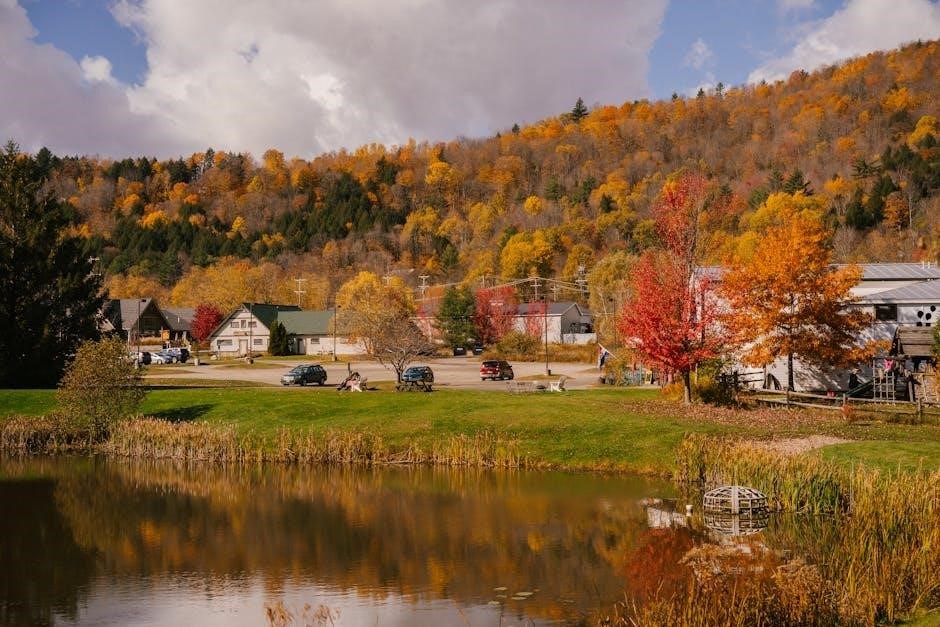
The Haunting of Hill House as a Gothic Horror Classic
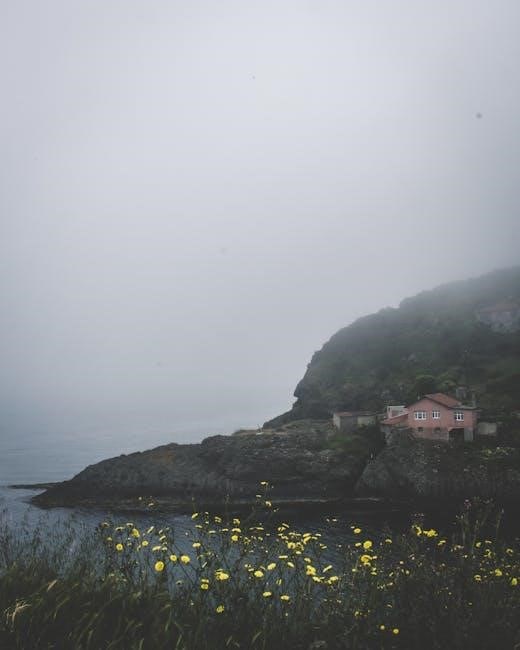
The Haunting of Hill House epitomizes Gothic horror with its eerie setting, supernatural themes, and psychological tension, solidifying its legacy as a cornerstone of the genre.
2.1 Key Elements of Gothic Horror in the Novel
The Haunting of Hill House embodies classic Gothic horror through its eerie atmosphere, supernatural phenomena, and psychological depth. The isolated, decaying mansion, with its labyrinthine layout and unsettling sounds, serves as a character itself, exuding malevolence. Themes of madness, grief, and the unknown are woven into the narrative, creating tension and fear. Jackson’s mastery of ambiguity leaves the supernatural unexplained, heightening the sense of dread. The novel’s exploration of the human psyche, particularly Eleanor’s fragile mental state, blends seamlessly with the house’s dark history, crafting a timeless tale of terror and despair that defines Gothic horror.
2.2 The Role of Hill House as a Character in Itself

Hill House is more than a setting; it is a living entity with its own malevolent personality. The house’s labyrinthine structure, shifting walls, and unexplained noises create an oppressive atmosphere, making it an active participant in the story. Its dark history and ability to manipulate the minds of its inhabitants underscore its role as a character. Jackson’s portrayal of the house as sentient and evil heightens the psychological horror, making it a central figure in the narrative rather than a mere backdrop. This personification of the house elevates it to a powerful, terrifying presence that shapes the characters’ fates.
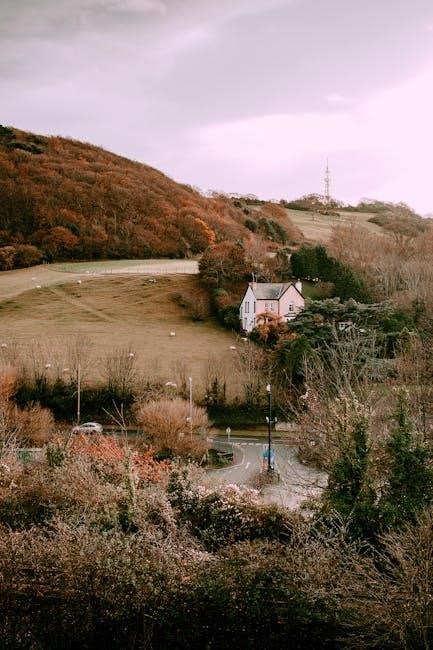
The Netflix Adaptation and Its Relevance
Mike Flanagan’s The Haunting of Hill House reimagines Shirley Jackson’s classic, blending psychological horror with family trauma. Its dual timelines and anthology format captivate modern audiences, exploring deeper themes while maintaining the original’s chilling essence.
3.1 Mike Flanagan’s Vision and Creative Liberties
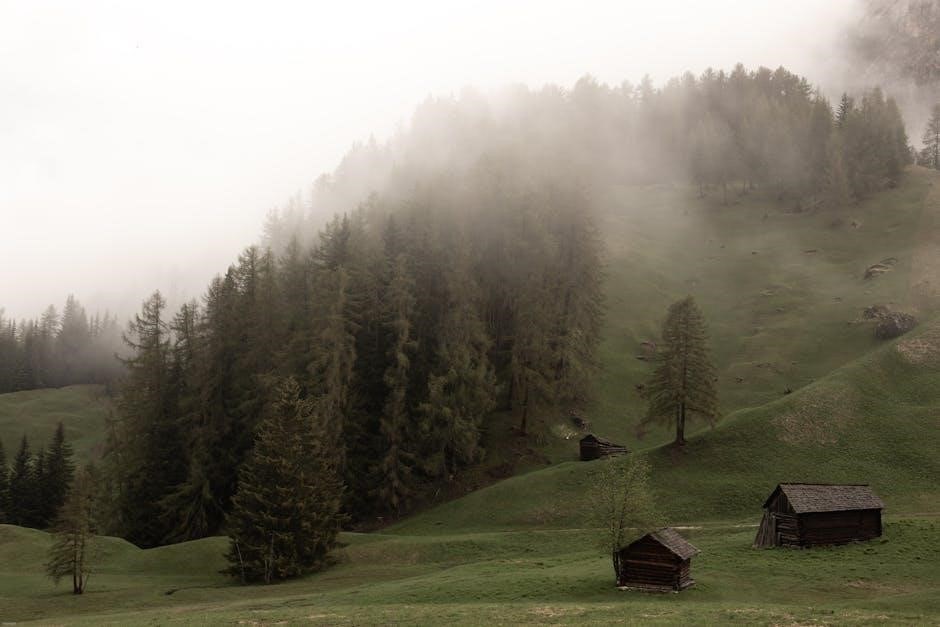
Mike Flanagan’s adaptation of The Haunting of Hill House for Netflix offers a fresh interpretation of Shirley Jackson’s novel. Flanagan’s vision expands on the original story, introducing complex characters and dual timelines that interweave past and present; His creative liberties include reimagining the house’s role and exploring themes of trauma and family dynamics. The series captures the psychological horror of the novel while adding new layers, such as the Crain family’s backstory, which deepens the narrative. Flanagan’s approach blends traditional horror elements with emotional depth, making the series a standout in the genre.
3.2 Differences Between the Book and the Series
The Netflix series deviates significantly from Shirley Jackson’s novel, offering a reimagined narrative. While the book focuses on Eleanor Vance and her supernatural experiences, the series expands on the Crain family’s backstory, introducing dual timelines. The show explores family trauma and psychological horror more deeply, adding characters like Theodora with unique arcs. The house’s role is consistent in both, but the series adds layers like the Bent-Neck Lady and the Red Room, enhancing the mystery. These creative choices modernize the story while retaining its eerie essence, appealing to both fans of the novel and new audiences.
Themes and Motifs in The Haunting of Hill House
Psychological horror and supernatural elements intertwine, exploring themes of trauma, isolation, and the blurred lines between reality and the supernatural, creating a chilling narrative that lingers long after the final page.
4.1 Psychological Horror and the Blurred Lines of Reality
Psychological horror in The Haunting of Hill House emerges through the manipulation of reality, where characters’ perceptions of events are distorted by fear and trauma. Eleanor’s internal struggles and supernatural experiences blur the line between reality and the supernatural, creating a sense of ambiguity. The house itself seems to amplify psychological frailties, isolating characters and heightening their paranoia. This theme is central to both Shirley Jackson’s novel and Mike Flanagan’s adaptation, where the interplay between mental instability and supernatural phenomena leaves audiences questioning what is real and what is imagined, adding depth to the horror narrative.
4.2 Trauma, Family Dynamics, and Isolation
Trauma and family dysfunction are central to The Haunting of Hill House, as the story explores how past events shape the characters’ lives. The fractured relationships within the family, exacerbated by their experiences in Hill House, reveal deep emotional scars. Isolation, both physical and psychological, amplifies their vulnerabilities, making it difficult for them to cope with the supernatural forces at play. The house, with its dark history, serves as a catalyst for these themes, forcing the characters to confront their inner demons and the lingering effects of their shared trauma, creating a haunting narrative of personal and familial breakdown.
The Characters and Their Psychological Depth
The characters in The Haunting of Hill House exhibit profound psychological complexity, with their past traumas and inner struggles shaping their interactions and perceptions within the eerie mansion.
5.1 Eleanor Vance: Her Struggles and Supernatural Abilities
Eleanor Vance, a central figure in The Haunting of Hill House, embodies both vulnerability and mystery. Her struggles stem from a troubled past and societal isolation, which heighten her sensitivity to the supernatural forces within Hill House. Possessing latent psychic abilities, Eleanor is uniquely attuned to the house’s haunting energy, making her a focal point of the paranormal events. Her fragile mental state and eventual descent into madness underscore the novel’s exploration of psychological horror, leaving readers questioning what is real and what is imagined. Her character serves as a tragic example of the house’s devastating impact on its inhabitants.
5.2 Theodora: Her Role and Mystique in the Story
Theodora, a charismatic and enigmatic figure, brings a unique energy to The Haunting of Hill House. Her confidence and apparent supernatural sensitivity make her a pivotal character, often acting as a medium for the house’s haunting forces. Theodora’s interactions with Eleanor are particularly significant, as their relationship evolves from camaraderie to tension, especially after the infamous “hands” incident. Her presence adds layers of mystery, blending psychological depth with supernatural intrigue, making her a captivating yet unpredictable element in the story’s unfolding terror and psychological unraveling.
The Setting and Atmosphere of Hill House
Hill House, an isolated mansion with a dark history, stands ominously against its hills, exuding an unsettling atmosphere of dread. Its eerie architecture and isolation amplify fear, creating a chilling backdrop for the haunting events that unfold within its walls.
6.1 The House’s History and Its Impact on the Characters
Hill House, with its dark and violent past, casts a shadow over its inhabitants. Built by Hugh Crain, the house has witnessed tragedy, including the death of Crain’s daughter, setting the stage for its malevolent presence. The house’s history of supernatural occurrences and untimely deaths creates an oppressive atmosphere, deeply affecting the characters. Eleanor Vance, already vulnerable, feels the house’s pull intensely, while others struggle with its unsettling energy. The house’s history becomes a character in itself, shaping the psychological turmoil and terrifying experiences of those who dare to enter.
6.2 The Use of Setting to Create Fear and Tension
The setting of Hill House is masterfully crafted to evoke fear and tension. Its eerie, isolated location and labyrinthine architecture create a sense of claustrophobia and disorientation. The house’s walls, floors, and doors seem to shift unpredictably, blurring the lines between reality and illusion. The oppressive silence and haunting shadows amplify the characters’ paranoia, making the house itself a vessel of terror. Jackson’s vivid descriptions of the house’s unsettling environment immerse readers in a world of dread, where the setting becomes a living, breathing entity that heightens psychological horror and keeps audiences on edge throughout the story.
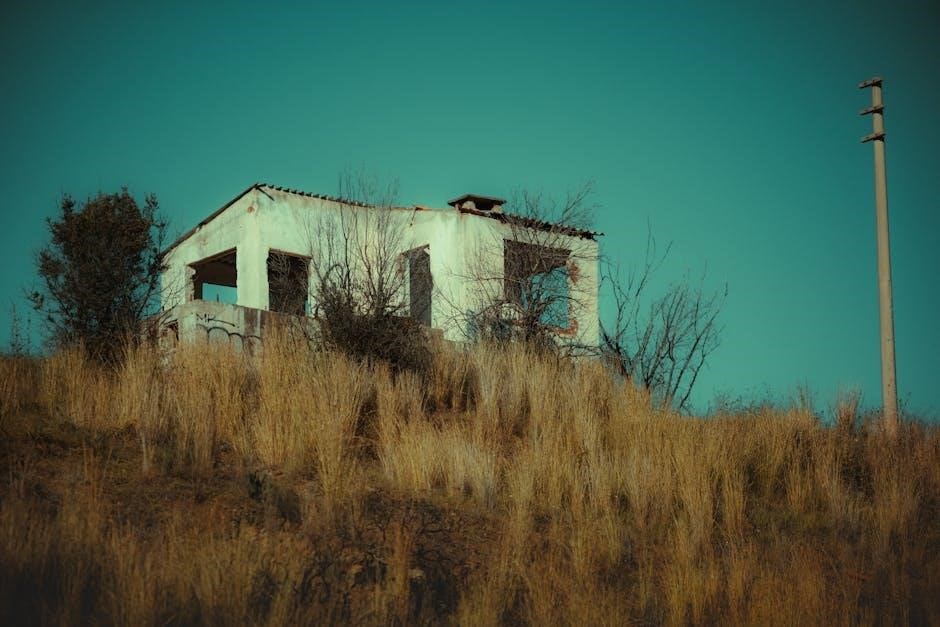
The Haunting of Hill House’s Influence on Literature and Media
The Haunting of Hill House has profoundly influenced horror literature and media, inspiring countless adaptations, including the acclaimed Netflix series, and shaping modern psychological horror narratives globally.
7.1 Its Impact on the Horror Genre
Shirley Jackson’s The Haunting of Hill House revolutionized the horror genre by blending psychological complexity with supernatural elements. Its exploration of mental fragility and ambiguous terror set a new standard, influencing authors like Stephen King. The novel’s focus on atmospheric tension and the unsettling power of suggestion reshaped how horror stories were crafted. Its legacy is evident in modern works, where psychological horror often takes precedence over overt scares. The Netflix adaptation further amplified its impact, introducing the story to a new generation and solidifying its place as a cornerstone of the genre.
7.2 Adaptations and Interpretations Over the Years
The Haunting of Hill House has inspired numerous adaptations, each offering unique interpretations. The 1963 film by Robert Wise remains a classic, while the 1999 remake introduced CGI effects. Netflix’s 2018 series reimagined the story, blending timelines and deepening character backgrounds. Stage plays and radio dramas have also adapted the novel, highlighting its versatility. These adaptations reflect evolving storytelling techniques while maintaining the core themes of psychological horror and supernatural mystery. Each version captures the essence of Shirley Jackson’s original, ensuring its enduring relevance across media platforms.
The Haunting of Hill House remains a timeless masterpiece, blending psychological horror and supernatural mystery. Its enduring legacy is evident in its influence on literature, film, and modern adaptations like Netflix’s series, ensuring its chilling tale continues to captivate audiences.
8.1 Why the Story Remains Relevant Today
The Haunting of Hill House continues to captivate audiences due to its timeless exploration of psychological horror, trauma, and isolation. Its themes of mental instability and the supernatural resonate deeply, offering a universal lens through which modern readers and viewers can reflect on their own fears. The story’s ambiguity and complex characters, particularly Eleanor’s struggles, create a narrative that remains open to interpretation. Additionally, its influence on literature, film, and popular culture, including the acclaimed Netflix adaptation, ensures its relevance in contemporary discussions of horror and storytelling.
8.2 Final Thoughts on Its Enduring Appeal
The Haunting of Hill House endures as a masterpiece of horror due to its masterful blend of psychological complexity and atmospheric tension. Shirley Jackson’s vivid portrayal of Hill House as a living entity and the fragile psyches of its inhabitants continues to unsettle readers. The story’s open-ended conclusion invites endless speculation, while its exploration of trauma, family dynamics, and isolation resonates universally. Adaptations, like Netflix’s series, further cement its place in popular culture, proving that its chilling narrative transcends time, making it a timeless classic in the horror genre.